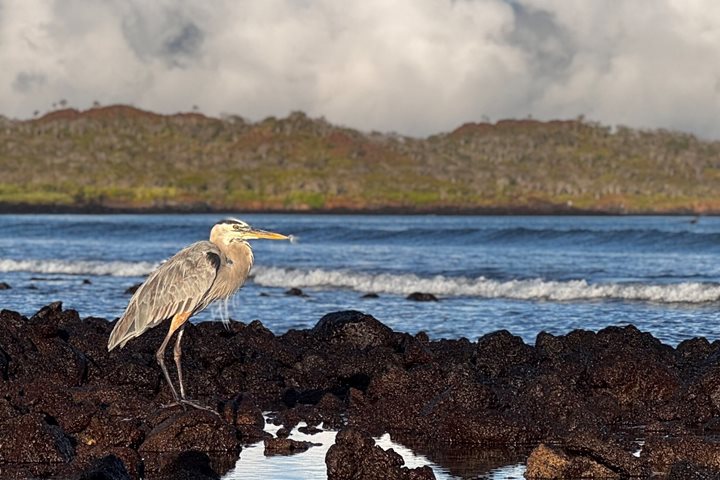Today we visited two small islands in the archipelago. It is almost impossible to visit all of them in one week, because we have more than a hundred islands in the archipelago. What is even more impressive is that each one of them has its own beauty and unique interest.
This morning we also learned that the flora and fauna of this archipelago is related to the closest continental mass, which is South America. And this very important fact also applied to this Oceanic Archipelago, where the flora and fauna of small Islands are very close related to the big island nearby. That is the reason adaptive radiation is a very common sighting in Galapagos.
Our first hike activity took place on North Seymour, and to make it suitable for everyone, we offered a long loop hike and a short one. Both groups had the same experience with Galapagos sea lions, frigates, boobies, marine and land iguanas and a few shore birds, but the highlight of the day were male, fully inflated frigate birds all over the island. We also learned that the lava lizards we have in North Seymour are called Santa Cruz lava lizards, because the same lizard is found there as well.
After a full morning of activity on this small – but interesting – island, it was a bit challenging to convince our guests to abandon the island to continue our afternoon activity on Rabida Island, a few miles away.
After a couple of hours’ navigation, we finally dropped anchor to continue our exploration. This time, we had different activities such as: glass bottom boating, deep water and shallow water snorkeling. To finish our day we disembarked on a red sandy beach to enjoy a beautiful sunset and photograph sea lions.
The afternoon couldn’t have been better to finish our day in Galapagos, where we enjoyed and learned different important facts about the Galapagos sea lions. We also spotted another kind of lava lizard known as Santiago lava lizard. These little details make Galapagos a living laboratory that deserves to be visited at least once in your lifetime.







